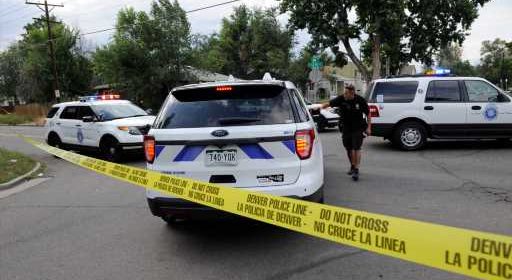Here’s how Denver officials say they’re addressing the city’s worst violence in decades – The Denver Post

Residents in five areas of Denver hard hit by shootings and murders can expect to see more police officers on foot and riding bicycles as city officials try to combat a wave of violence that took the lives of 95 people in 2020, making it the city’s deadliest year in decades.
Police officers also will partner with mental health providers and community organizations during these patrols, Mayor Michael Hancock and Denver police Chief Paul Pazen announced at a news conference Monday.
Other city departments, like the Department of Human Services and the Department of Transportation and Infrastructure, will work with police to help fix problems in the areas, like broken streetlights, and connect residents to resources.
“Getting officers out of cars, we can connect with people, we can disrupt the crime patterns to deter criminal activity from occurring in the first place,” Pazen said.
After analyzing data about when and where violence happens, the police department decided to focus its work on areas around five intersections: Colfax Avenue and Broadway, Alameda Avenue and Federal Boulevard, Colfax and Yosemite Street, Martin Luther King Jr. Boulevard and Holly Street, and 47th Avenue and Peoria Street.
Those areas make up less than 2% of the city’s landmass but accounted for approximately 26% of homicides and 49% of aggravated assaults in 2020, according to the department.
“It is not our goal to go in with a heavy fist or a hammer, but our goal is to partner with the neighborhood organizations and the residents and to solve the root problems,” Pazen said in an interview.
But some saw the city’s plan as nothing new. Community policing and data-driven policing are not novel strategies, said Lisa Calderón, chief of staff for Councilwoman Candi CdeBaca.
“We just hope that people don’t fall for the public safety propaganda that justifies expanded policing into vulnerable communities,” Calderón said. “We’ve asked for the opposite of more police.”
The plan comes as the city grapples with rising violence and was announced nearly a year after thousands of protesters marched in downtown Denver following the murder of George Floyd to call for fundamental changes to how the city is policed.
Ninety-five people were killed in homicides in 2020 — the highest number of killings recorded in the city since 1981. The number of people who were shot but survived increased 51% from 2019 to 2020, when 305 people were injured in gunfire.
Most types of property crime also increased last year. In comparison to the average of the previous four years, burglaries rose 23% in 2020, larceny rose 9%, auto theft rose 61% and theft from cars rose 39%, Denver police data shows.
Hancock’s announcement also follows the publication Friday of a 53-page report compiled by a coalition of community organizations that includes 112 recommendations to make the city safer and more just. The recommendations from the Task Force to Reimagine Policing and Public Safety include the creation of an unarmed, non-law enforcement agency to respond to safety needs and major changes to how police are disciplined.
City officials on Monday said they were still reviewing the report’s recommendations.
Murphy Robinson, executive director of the Department of Public Safety, on Monday also announced the creation of the Transformation and Policy Division, which will take residents’ suggestions for criminal legal reform, research them and see if they can be implemented.
“Help us understand how we can move the needle,” he said.
The office has been in formation since October and was operational beginning in April, Robinson said in an interview. Three full-time staff work in the division and Robinson hopes to hire one or two more full-time employees.
Denver residents on Monday gathered outside of city hall in support of the task force’s recommendations and criticized the city’s violence reduction plan and the office of transformation.
The community has been clear what it wants, speakers said, and didn’t need another layer of bureaucracy. They wrote a 53-page report detailing their needs.
Now, city leaders need to implement the changes or leave office, said Abron Arrington, care manager at Second Chance Center, which helps people re-enter society after incarceration.
“I refuse to call them recommendations — I’ll refer to them as demands,” Arrington said. “If you do not agree with these, you need to leave.”
Source: Read Full Article

